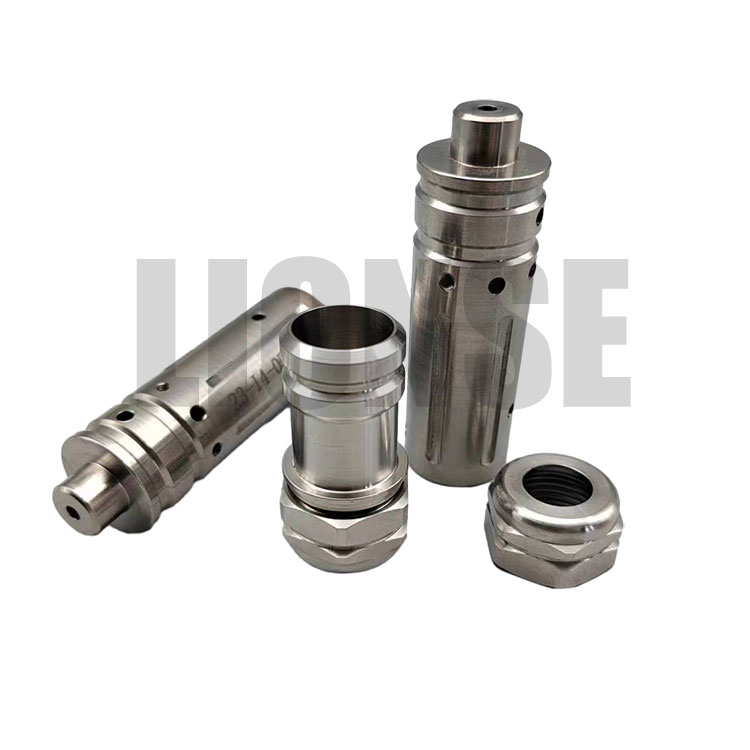Forging Strength: Ensuring Durability and Reliability in Titanium Components for Aircrafts
2024-06-24
Titanium has revolutionized the aerospace industry with its exceptional properties, but its journey from raw material to critical aircraft component involves a sophisticated manufacturing process. This process is meticulously designed to enhance durability and reliability, ensuring that titanium components meet the stringent requirements of modern aircraft. In this blog, we explore how the manufacturing process of titanium components for aircrafts ensures their durability and reliability, highlighting the steps and techniques involved.
1. Material Selection and Preparation
Quality Titanium: The manufacturing process begins with the selection of high-quality titanium alloys suited for aerospace applications. These alloys are chosen based on their specific properties, such as strength, corrosion resistance, and thermal stability.
Raw Material Inspection: Raw titanium material undergoes rigorous inspection to ensure it meets aerospace standards for purity, composition, and mechanical properties. Any deviations or impurities can compromise the final component’s performance.
2. Precision Machining and Fabrication
CNC Machining: Computer Numerical Control (CNC) machines are used for precise shaping and cutting of titanium components. This technology allows for tight tolerances and complex geometries required for aerospace parts, such as turbine blades and structural elements.
Advanced Fabrication Techniques: Techniques like hot forging, cold forming, and precision casting are employed to shape titanium into desired forms without compromising its structural integrity. These methods minimize stress concentrations and ensure uniformity throughout the component.
3. Heat Treatment and Annealing
Strengthening Processes: Titanium components undergo heat treatment processes to enhance their mechanical properties, such as strength and toughness. This involves heating the material to specific temperatures and then cooling it under controlled conditions to achieve desired microstructures.
Annealing: Annealing is another critical process that relieves internal stresses in titanium components, improving their fatigue resistance and overall durability. It also helps in refining grain structure for better mechanical performance.
4. Surface Treatment and Coatings
Corrosion Protection: Titanium components are often treated with protective coatings or surface treatments to enhance their resistance to corrosion and wear. This includes anodizing, chemical treatments, and application of specialized coatings that improve durability in harsh environments.
Surface Finish: The final surface finish of titanium components is carefully controlled to minimize roughness and improve aerodynamic performance. Smooth surfaces reduce drag and enhance fuel efficiency, contributing to the overall reliability of the aircraft.
5. Non-Destructive Testing (NDT) and Quality Assurance
Testing Protocols: Comprehensive NDT techniques, such as ultrasonic testing, X-ray inspection, and magnetic particle testing, are employed to detect any defects or anomalies in titanium components. This ensures that only components meeting strict quality standards are used in aircraft assembly.
Quality Control: Throughout the manufacturing process, stringent quality control measures are implemented to monitor dimensional accuracy, material properties, and adherence to engineering specifications. Quality assurance protocols certify that titanium components are reliable and safe for aerospace use.
6. Assembly and Integration
Precision Assembly: Titanium components undergo meticulous assembly processes where they are integrated into larger aircraft structures or systems. Each component’s fit and function are verified to ensure seamless integration and optimal performance in the final aircraft assembly.
Testing and Certification: Finished titanium components and assemblies undergo extensive testing and certification procedures to validate their durability, reliability, and compliance with regulatory standards. This includes functional testing, load testing, and simulation of operational conditions.
Conclusion
The manufacturing process of titanium components for aircrafts is a testament to precision engineering and advanced materials science. From material selection and machining to heat treatment, surface finishing, and quality assurance, every step is carefully orchestrated to enhance durability and reliability. Titanium’s unique properties, combined with meticulous manufacturing techniques, ensure that these components meet the demanding requirements of modern aerospace applications. As aerospace technology continues to evolve, titanium remains a cornerstone material in pushing the boundaries of aircraft performance, safety, and efficiency. Its role in shaping the future of aviation underscores its reputation as a metal of choice for achieving unparalleled durability and reliability in critical aircraft components.



